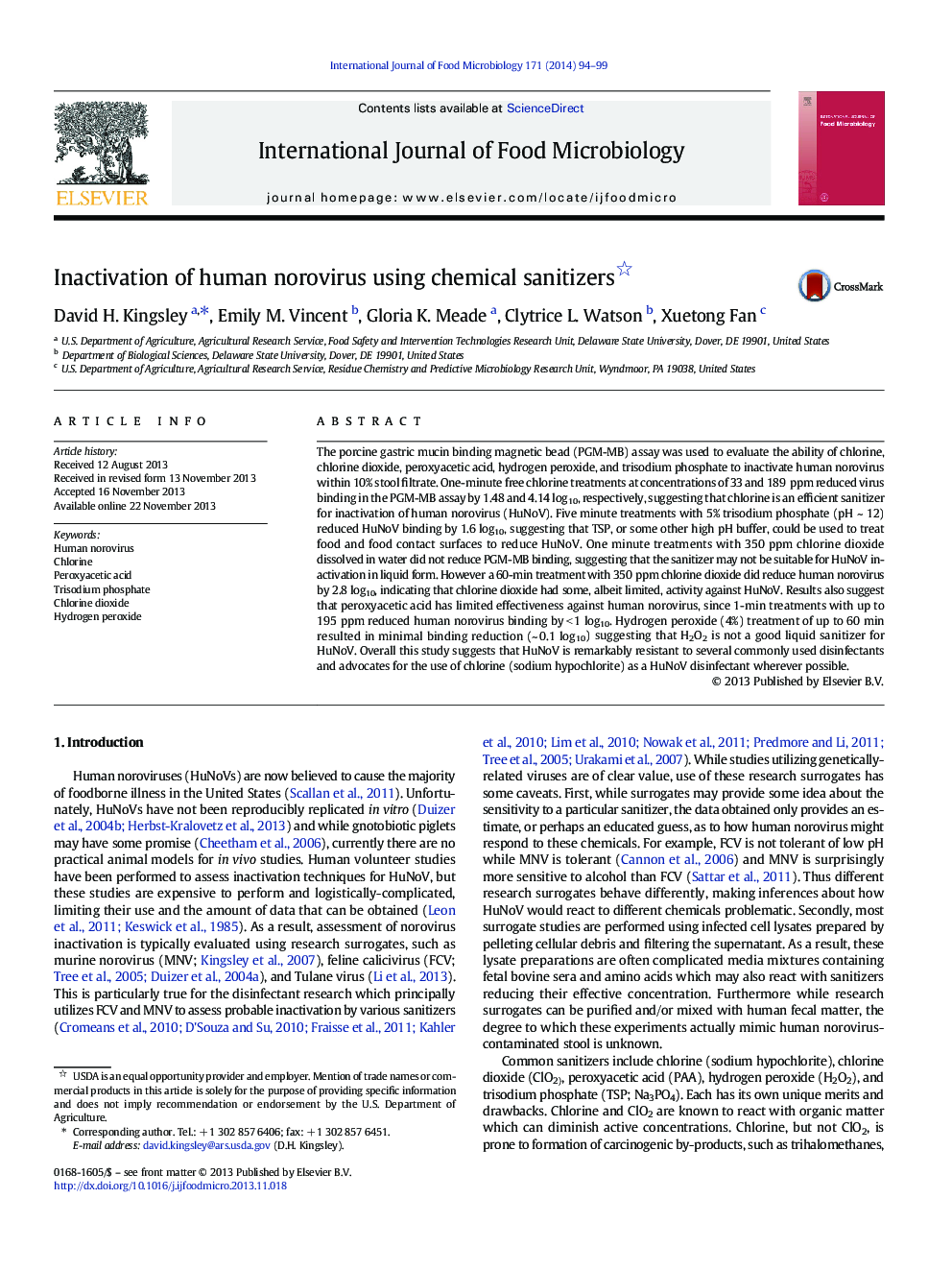| کد مقاله | کد نشریه | سال انتشار | مقاله انگلیسی | نسخه تمام متن |
|---|---|---|---|---|
| 6290071 | 1616611 | 2014 | 6 صفحه PDF | دانلود رایگان |
عنوان انگلیسی مقاله ISI
Inactivation of human norovirus using chemical sanitizers
ترجمه فارسی عنوان
غیر فعال کردن نانو ویروس انسان با استفاده از دستگاه های ضد عفونی کننده شیمیایی
دانلود مقاله + سفارش ترجمه
دانلود مقاله ISI انگلیسی
رایگان برای ایرانیان
کلمات کلیدی
نووروویروس انسانی، کلر، اسید پرکسی اسیته، تری سدیم فسفات، دی اکسید کلر، آب اکسیژنه،
موضوعات مرتبط
علوم زیستی و بیوفناوری
علوم کشاورزی و بیولوژیک
دانش تغذیه
چکیده انگلیسی
The porcine gastric mucin binding magnetic bead (PGM-MB) assay was used to evaluate the ability of chlorine, chlorine dioxide, peroxyacetic acid, hydrogen peroxide, and trisodium phosphate to inactivate human norovirus within 10% stool filtrate. One-minute free chlorine treatments at concentrations of 33 and 189Â ppm reduced virus binding in the PGM-MB assay by 1.48 and 4.14 log10, respectively, suggesting that chlorine is an efficient sanitizer for inactivation of human norovirus (HuNoV). Five minute treatments with 5% trisodium phosphate (pHÂ ~Â 12) reduced HuNoV binding by 1.6 log10, suggesting that TSP, or some other high pH buffer, could be used to treat food and food contact surfaces to reduce HuNoV. One minute treatments with 350Â ppm chlorine dioxide dissolved in water did not reduce PGM-MB binding, suggesting that the sanitizer may not be suitable for HuNoV inactivation in liquid form. However a 60-min treatment with 350Â ppm chlorine dioxide did reduce human norovirus by 2.8 log10, indicating that chlorine dioxide had some, albeit limited, activity against HuNoV. Results also suggest that peroxyacetic acid has limited effectiveness against human norovirus, since 1-min treatments with up to 195Â ppm reduced human norovirus binding by <Â 1 log10. Hydrogen peroxide (4%) treatment of up to 60Â min resulted in minimal binding reduction (~Â 0.1 log10) suggesting that H2O2 is not a good liquid sanitizer for HuNoV. Overall this study suggests that HuNoV is remarkably resistant to several commonly used disinfectants and advocates for the use of chlorine (sodium hypochlorite) as a HuNoV disinfectant wherever possible.
ناشر
Database: Elsevier - ScienceDirect (ساینس دایرکت)
Journal: International Journal of Food Microbiology - Volume 171, 3 February 2014, Pages 94-99
Journal: International Journal of Food Microbiology - Volume 171, 3 February 2014, Pages 94-99
نویسندگان
David H. Kingsley, Emily M. Vincent, Gloria K. Meade, Clytrice L. Watson, Xuetong Fan,
